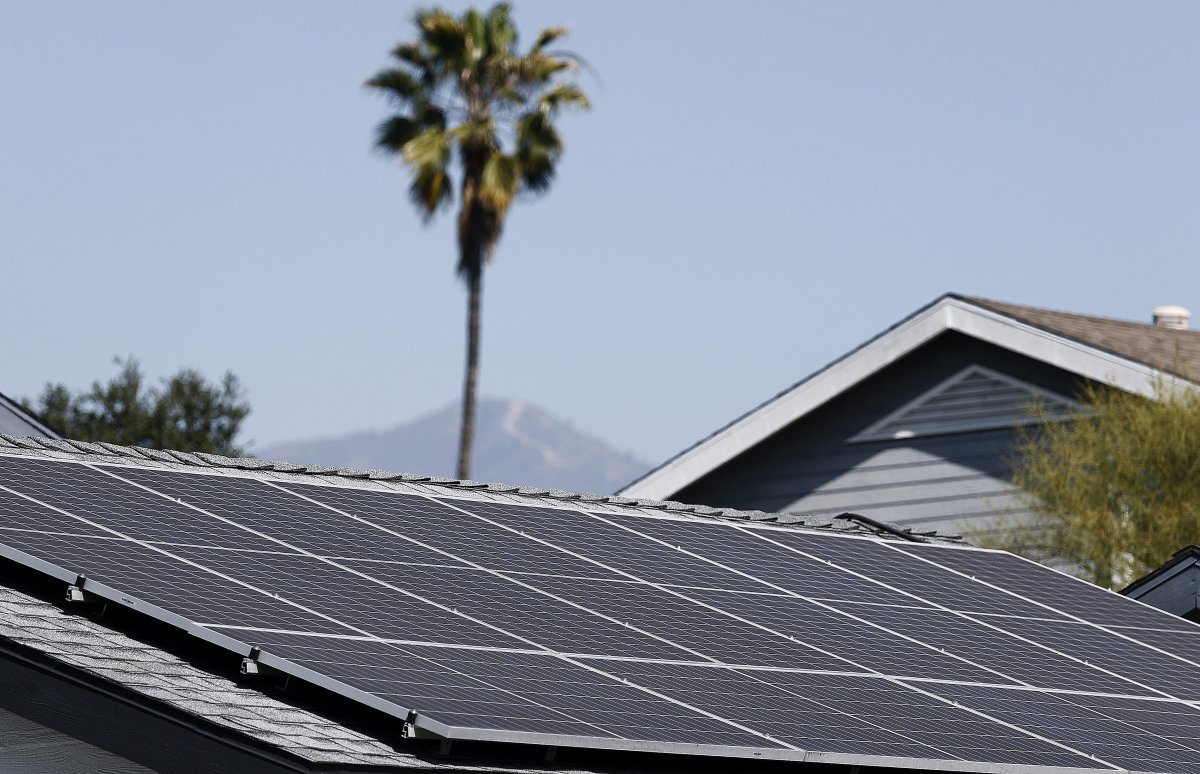
Fewer clean energy projects will be commissioned or reach completion as a result of the Republican tax bill pushed through Congress, potentially raising energy bills for millions, according to experts who spoke with Newsweek.
“This bill will raise energy prices for all Americans,” said Harry Godfrey, the managing director and head of federal engagement at Advanced Energy United, an industry association representing renewable power companies in the U.S.
“No two ways about it,” he added. “This bill will kill clean energy projects, particularly wind and solar projects, in active development.”
Newsweek has contacted the White House for comment outside regular office hours.
Samuel Corum/Getty Images
The final version of the One Big Beautiful Bill Act, signed into law by President Donald Trump on July 4, contains signification revisions and rescissions to clean energy grant programs enacted as part of the 2022 Inflation Reduction Act (IRA). This act, widely considered the centerpiece of Joe Biden‘s presidency, directed more than $300 billion in funds toward supporting renewable energy projects, primarily in the form of tax credits and grants aimed at expediting private investment. About $160 billion in clean energy investments have been announced since its passage, according to the Clean Economy Tracker, a partnership between Utah State University and the research firm Atlas Public Policy.
“The main benefit of the IRA was putting a floor on the amount of renewables that would be built, reducing future uncertainty in electricity prices and emissions,” said James Bushnell, a co-director of the Energy Economics Program at the University of California, Davis.
“Maybe a lot of these renewables would have been built anyway, but the IRA eliminated scenarios where they might not have been,” he told Newsweek. “Those scenarios are now back on the table.”
The White House has said the new tax bill will “drive down energy costs” through expanded oil, gas and coal production. However, it significantly shortens the window for wind and solar projects to qualify for tax credits, phasing these in over the coming years. To qualify, such projects must either be finished by the end of 2027 or begin construction within the next year.
“The most likely projects to be impacted will be those in development that cannot move to construction in the next six to 12 months,” Godfrey said.
“Some financiers won’t wait around to see if the projects meet the new cutoff,” he continued. “So very real projects that would have come online at the tail end of this decade—creating thousands of jobs, millions in tax revenue for local communities, representing billions in private investment—they’ll go up in smoke.”
According to Godfrey, as the bill has been debated and revised since Trump assumed office, many energy companies have gotten “cold feet,” scaling back renewables projects given the anticipated effects.
According to Dan O’Brien, a senior analyst at the climate policy think tank Energy Innovation, individual cases of firms reneging on their renewables investments have become commonplace. He referenced a solar company that announced plans last summer to establish a cell manufacturing plant in Minnesota. However, as the plan to cut tax credits came closer to becoming a reality, it paused construction on the plant and held off on purchasing equipment.
While these big-picture effects are significant, Godfrey said the consumer-side effects are “even more worrisome.” He added that the bill also terminated the 30 percent tax credit previously available to cut the up-front costs of installing solar panel systems at the end of 2025.
“While solar leasing will endure for the near-term, ‘mom and pop’ solar installers whose businesses are built on solar sales face a bleak picture,” he said.

Mario Tama/Getty Images
While Energy Innovation’s research found that the bill would “raise energy prices for all Americans,” O’Brien told Newsweek that it would “vary by state.” Particular effects, he said, would be felt in the South and Midwest, given the regions’ enormous solar and wind potential but the lack of state government support for such projects.
“As a result, these states see the highest energy cost increases, to the tune of over $600 increases annually for households in Missouri, Kentucky, and South Carolina,” he said, giving the think tank’s inflation-adjusted estimates for 2035. “Oklahoman, Texan, and North Carolinian families will also see steep increases of $480 to $540.”
Nationally, Energy Innovation has found that the bill will result in a 10 to 18 percent increase in energy bills for residential, commercial and industrial consumers by 2035.
This is in addition to the effects of the national economic slowdown the think tank expects the bill to cause: $980 billion in lost gross domestic product during the 2025-2034 budget period, alongside 760,000 lost jobs by the end of the decade.
